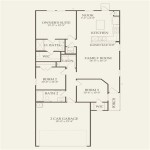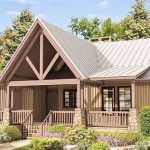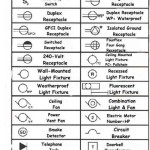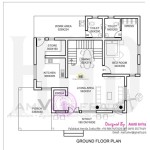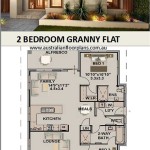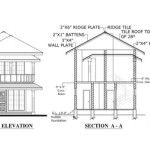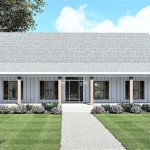Zero Entry Home Plans: Designing for Accessibility and Modern Living
Zero entry homes, also known as single-story or no-step homes, are gaining popularity for their accessibility and modern design. These homes eliminate exterior and interior steps, creating a seamless transition between different living spaces and the outdoors. This design feature benefits a wide range of individuals, from those with mobility challenges to young families and individuals seeking a more convenient living arrangement. This article explores the key features, benefits, and considerations involved in choosing zero entry home plans.
One of the primary advantages of zero entry homes is their enhanced accessibility. Individuals using wheelchairs, walkers, or other mobility aids can navigate the home with ease. The absence of steps minimizes the risk of falls, making these homes a safer option for older adults, children, and individuals with balance issues. This design feature also simplifies moving furniture and other large items in and out of the home.
Beyond accessibility, zero entry home plans offer a variety of benefits. They often feature open floor plans, which create a spacious and airy atmosphere. This design element promotes natural light penetration and facilitates easy movement between rooms. Open floor plans can also enhance social interaction, making them ideal for entertaining guests and family gatherings.
Zero entry homes can be designed to blend seamlessly with various architectural styles, from ranch and contemporary to craftsman and farmhouse. This design flexibility allows homeowners to personalize their homes to reflect their individual preferences and the surrounding landscape. The single-story design can also simplify maintenance and reduce the costs associated with multi-story homes, such as complex roofing systems and extensive stair upkeep.
When considering zero entry home plans, several important factors should be considered. Lot selection is crucial, as a relatively flat lot will minimize grading and excavation costs. Working with an experienced architect or builder specializing in accessible design is essential to ensure the home meets specific accessibility requirements and building codes. Proper planning and design can optimize the flow of the home and maximize the use of available space.
Incorporating universal design principles into zero entry home plans can further enhance their functionality and long-term value. Universal design focuses on creating environments that are usable by people of all ages and abilities. Features such as wider doorways, lever-style door handles, and grab bars in bathrooms can be incorporated seamlessly into the design to enhance accessibility and safety.
The layout of a zero entry home is a critical aspect of its functionality. Careful consideration should be given to the placement of bedrooms, bathrooms, and common areas. For instance, placing the master suite on one side of the home and other bedrooms on the opposite side can provide privacy and reduce noise transfer. Positioning the kitchen and living areas centrally can create a hub for family interaction and entertaining.
Outdoor living spaces are an important extension of zero entry homes. Patios, decks, and porches can be designed to be easily accessible from the main living areas, blurring the lines between indoor and outdoor living. These spaces can be customized to accommodate various activities, such as dining, relaxing, and gardening.
Cost considerations for zero entry homes can vary depending on factors such as the size of the home, the materials used, and the location. Generally, single-story homes can have lower construction costs per square foot compared to multi-story homes due to simpler framing and roofing requirements. However, the footprint of a zero entry home may be larger to accommodate the same amount of living space as a two-story home, potentially increasing the overall cost of the foundation and land.
Zero entry home plans offer a practical and stylish solution for individuals seeking a home that is both accessible and aesthetically pleasing. By carefully considering the various design elements, accessibility features, and cost factors, individuals can create a home that meets their specific needs and enhances their quality of life. These homes are an investment in long-term comfort, convenience, and universal accessibility, making them an increasingly popular choice for modern living.
The integration of smart home technology can further enhance the convenience and accessibility of zero entry homes. Features like automated lighting, voice-activated controls, and remote-controlled door locks can simplify daily tasks and enhance security, particularly for individuals with mobility limitations.
Sustainable design principles can also be incorporated into zero entry home plans. Energy-efficient windows, insulation, and appliances can reduce utility costs and minimize the home’s environmental impact. Solar panels can be integrated into the roof design to generate renewable energy, further reducing the home’s carbon footprint.
Consulting with a builder experienced in zero entry construction is essential for a successful project. They can provide valuable insights into site preparation, foundation design, and framing techniques specific to single-story homes. A knowledgeable builder can also help navigate building codes and regulations related to accessibility and ensure the home meets all necessary requirements.

Zero Lot Contemporary 72028da Architectural Designs House Plans

3 Benefits Of Owning A Zero Entry Home
Building Zero Step Entries Jlc
Building Zero Step Entries Jlc

Example Of A Zero Level Entry Home House Exterior Entrance Design Accessible Plans

Deltec Homes Renew Collection Ridgeline B 1604sf Passive Solar Layout Vaulted Ceilings High Clere House Plans Prefabricated Houses Dream

Empty Nester House Plans Retirement The Designers

Zero Energy Two Natural Building Blog

Zero Lot Line Designs

Empty Nester House Plans Retirement The Designers

